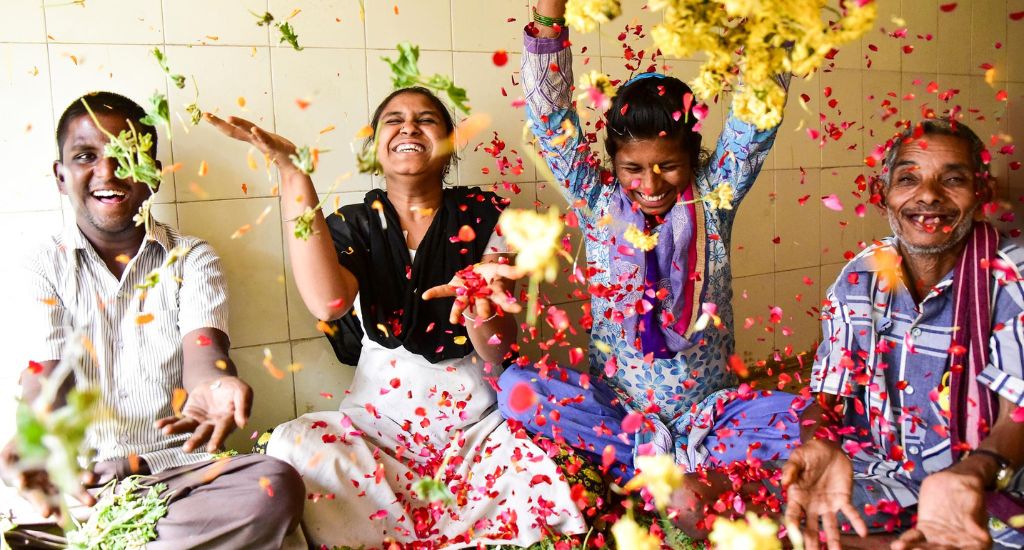
‘We need to empower artisans to create market-ready designs’
Rural craftspersons have to be trained in costing, pricing, marketing, understanding consumers, packaging and storytelling to help them become successful entrepreneurs.

Rural craftspersons have to be trained in costing, pricing, marketing, understanding consumers, packaging and storytelling to help them become successful entrepreneurs.
Mayura Balasubramanian: I will tell you two quick stories. In Karnataka, we set up a design innovation lab in Channapatna about a year-and-a-half ago. Channapatna is a well-known cluster located between Bengaluru and Mysuru. However, the location also means that the youth have access to white-collar jobs. As a result, many men started migrating, and the number of artisans began to decline rapidly.

We’ve been working with one particular group in Channapatna for many years. To encourage more artisans to stay we realised two things: we needed to increase their earnings and also introduce more women to the craft. Traditionally, working with wood and on the lathe machine was considered men’s work, with women as supporters.
However, we trained women to work on the lathe machine. By setting up this design innovation lab, we tripled the production capacity of that group, leading to more production and higher income. This was a very innovative project, and L&T Technology Services supported us in this initiative.
Another story is about bena grass jewellery. Bena grass is a material that only one tribal artisan was working with, and the women in his family were just helping him. The grass grows only three to four months a year, so it has to be harvested and stored for the rest of the year.
We saw potential in this craft, although the designs could be better finished. We trained a group of 50 women over two years in basic, advanced and design training. Today, about 15 of them have become entrepreneurs and are now employing other women. We had a designer work with them for almost six months, building their capacity to create market-ready designs. This effort bridged the gap between artisanal skills and market-ready products.

We taught these women, who lacked formal education, about costing, pricing, marketing, understanding consumers, packaging and storytelling. This comprehensive training is what helped them become successful entrepreneurs.
MB: Growing up, I was exposed to craft very early on. My mother used to pick me up from school and take me to various craft melas and exhibitions. While she explored the stalls, I’d often sit with an artisan and try to understand their craft.
In the 1990s, artisans had more time and were happy to show someone interested in their work. That’s how my interest started. Every summer holiday, I attended different cultural workshops, doing pottery, mask making, tie and dye, and other crafts.
I had the opportunity to work with Delhi-based artist Jatin Das who was setting up an art centre (JD Center of Art (JDCA)) in Bhubaneswar. I helped him put together a business plan for the centre and worked on a short-term engagement. With JDCA I had the opportunity to organise the first documentary film festival on art and artists, which was a niche but fascinating project.
My dream job came when I worked with the United Nations Development Program (UNDP) on a rural tourism project funded by the agency and the Ministry of Tourism in 36 villages across 20 states. We created a sub-brand called Explore Rural India under the Incredible India banner.

This experience made me realise that while tourism is a great opportunity for village communities, it’s seasonal. Artisans can earn year-round if they have a bigger market and better awareness of current trends and consumer preferences. Around that time, the new Companies Act with Corporate Social Responsibility (CSR) guidelines came out, making it a great opportunity for structured funding for the craft sector.
I set up Craftizen in 2014 to connect the craft sector with the corporate sector. Craftizen runs CSR-funded programmes for skilled and unskilled communities. Ninety percent of the people we work with are unskilled, including adults with intellectual disabilities and unskilled women, while 10 percent are traditional artisans.
MB: We work with adults with intellectual disabilities whose fine motor skills and coordination are limited. Research showed that working with flowers is therapeutic and widely available, so we partnered with NIMHANS to start the Green Skilling Program in 2016.
Our study, later published in an international mental health journal, highlighted the therapeutic and income-generating benefits of this work. Tasks like de-petaling flowers help improve concentration and provide a calming effect, even for those who are usually agitated. Simple activities like colour sorting and teamwork further enhance cognitive and developmental skills.
For example, many adults with intellectual disabilities have difficulty concentrating. But if you give them a task, like de-petaling a basket of flowers, they can finish it and feel the satisfaction of completing a task. It’s therapeutic and calming.
Today, we’re recycling flowers and paper. We even combined the two to create a new material called Flowdust, made from flowers and paper dust. With Flowdust, we make biodegradable and eco-friendly products like trophies and medals. We also make Holi colours, paper bags, diya candles, aromatic candles, pens made from newspapers, and many other crafts.

There are many centres across the country, mainly NGOs working with intellectual disabilities. They have daycare centres with vocational units, but these units often don’t produce much for income generation. We wanted to change that by bringing dignity to their labour and a focus on sustainability and quality.
We bring funders and donors on board and do the heavy lifting at the front end. The day-to-day operations are run by the NGO partners. This has become a fantastic collaborative model. Today, we have 55 centres in nine states, and by 2027, we aim to start 100 centres. This project, titled the Green Skilling Program, has been supported by Accenture India under their CSR programme.
The lead image on top shows workers carrying out flower recycling as part of a green skilling initiative. (Photo courtesy Craftizen)